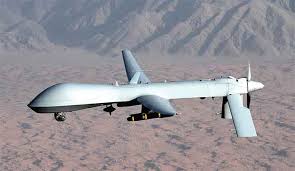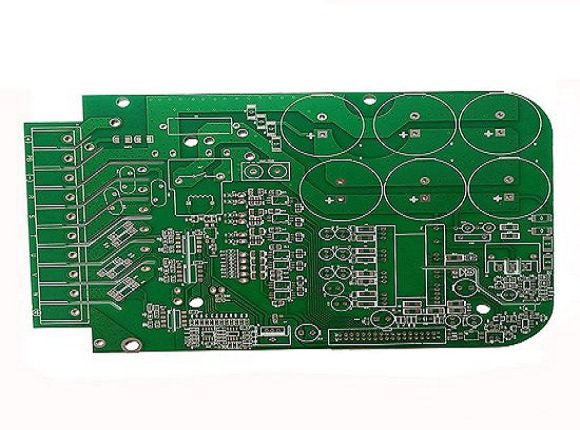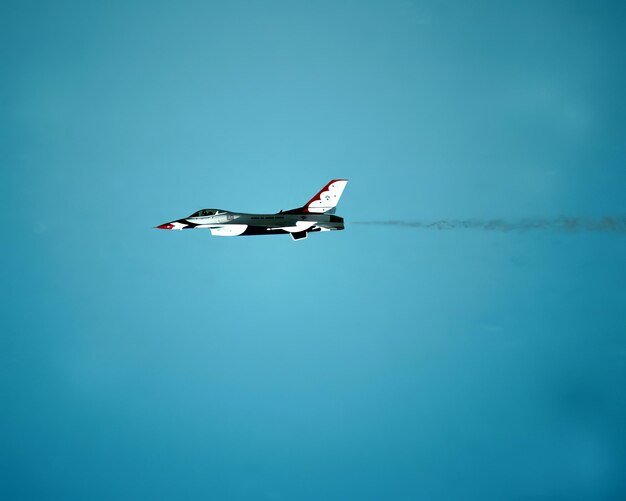In the high-stakes world of military operations, every component must perform flawlessly under extreme conditions. Defense PCBs (Printed Circuit Boards) are the silent guardians that power and protect critical military systems. But what makes these boards so vital? Simply put, defense PCBs are specialized circuit boards designed to meet the rigorous demands of military applications, ensuring reliability, security, and durability in environments where failure is not an option. In this blog, we'll dive deep into the world of defense PCB applications, explore military PCB components, and uncover the importance of secure PCB design in defense electronics manufacturing for critical system PCB solutions.
Why Defense PCBs Are the Backbone of Military Technology
Modern military systems rely heavily on electronics for communication, navigation, surveillance, and weaponry. From drones and radar systems to secure communication devices, these technologies depend on PCBs to function. Unlike standard PCBs used in consumer electronics, defense PCBs are built to withstand harsh environments, including extreme temperatures, vibrations, and even potential cyber threats. Their role is not just to connect components but to ensure that mission-critical systems operate without interruption.
For instance, a defense PCB in a military drone must maintain signal integrity at high altitudes where temperatures can drop below -40°C. These boards often use materials with low thermal expansion coefficients, like polyimide, to prevent cracking or warping. Their design also focuses on high-density interconnects (HDI) to pack more functionality into smaller spaces, a necessity for portable military gear.

Key Features of Defense PCB Applications
The applications of defense PCBs are vast and varied, covering everything from ground-based systems to aerospace technology. Here are some critical areas where these boards play a pivotal role:
- Communication Systems: Secure and reliable communication is vital in military operations. Defense PCBs in radios and satellite systems ensure encrypted data transmission with minimal signal loss, often maintaining impedance values as precise as 50 ohms to match transmission lines.
- Radar and Surveillance: Radar systems detect threats over long distances, relying on PCBs for high-frequency signal processing. These boards often use specialized substrates like Rogers materials to handle frequencies above 10 GHz with low dielectric loss.
- Weapon Systems: Precision-guided munitions and missile systems depend on PCBs for control and guidance. These boards must resist shock and vibration, often meeting MIL-STD-810 standards for environmental testing.
- Unmanned Vehicles: Drones and autonomous vehicles use defense PCBs for navigation and real-time data processing, requiring lightweight designs with high thermal management capabilities.
Each of these defense PCB applications demands unique design considerations to ensure performance under stress. The ability to operate in diverse conditions while maintaining functionality is what sets these boards apart.
Understanding Military PCB Components
The components used in military PCBs are selected for their robustness and reliability. Unlike commercial-grade parts, military PCB components must adhere to strict standards, such as MIL-PRF (Military Performance Specification), to guarantee performance in critical scenarios. Let's look at some key components and their roles:
- Resistors and Capacitors: These components often have extended temperature ranges, operating from -55°C to 125°C, to handle extreme conditions. They are also chosen for low failure rates, measured in parts per million (PPM).
- Connectors: Military-grade connectors are designed for high vibration resistance and secure mating, ensuring no signal loss during rough handling or combat situations.
- Microcontrollers and ICs: Integrated circuits (ICs) in defense systems are often radiation-hardened to protect against electromagnetic interference (EMI) and potential nuclear event exposure.
- Thermal Management Components: Heat sinks and thermal vias are critical to dissipate heat in high-power systems, maintaining operational stability in devices like power amplifiers.
These components are meticulously tested for durability and compatibility with the PCB design, ensuring the entire system functions as a cohesive unit even in the most demanding environments.

The Importance of Secure PCB Design in Defense Systems
Security is a top priority in military electronics. A breach in a defense system could compromise national security, making secure PCB design a non-negotiable aspect of manufacturing. But what does secure design entail? It's about protecting the board from physical tampering, environmental hazards, and cyber threats.
One key approach is the use of anti-tamper technologies. These include embedding security features like encrypted firmware within the PCB layers, making it nearly impossible for unauthorized parties to reverse-engineer the design. Additionally, secure designs often incorporate conformal coatings—thin protective layers applied over the board—to shield against moisture, dust, and chemical exposure.
Another critical aspect is signal integrity. Defense PCBs are designed to minimize electromagnetic interference (EMI) through proper grounding and shielding techniques. For example, multilayer boards with dedicated ground planes can reduce noise levels by up to 30%, ensuring clear communication signals in noisy battlefield environments.
Lastly, supply chain security plays a role in secure design. Manufacturers must source components from trusted suppliers to avoid counterfeit parts, which could introduce vulnerabilities. This is especially important in defense electronics manufacturing, where every piece must meet stringent quality controls.
Challenges in Defense Electronics Manufacturing
Manufacturing PCBs for military use is no small feat. The process involves overcoming several challenges to meet the high standards of reliability and performance. Here are some of the hurdles faced in defense electronics manufacturing:
- Harsh Environment Testing: Boards must pass rigorous tests for temperature, humidity, and vibration. For instance, thermal cycling tests often range from -65°C to 150°C to simulate real-world extremes.
- Compliance with Standards: Defense PCBs must comply with standards like IPC-6012 (Qualification and Performance Specification for Rigid Printed Boards) and MIL-STD-883 (Test Methods for Microcircuits) to ensure quality.
- Cost vs. Quality: Balancing the high cost of specialized materials and components with budget constraints is a constant challenge. High-frequency laminates, for example, can cost up to 10 times more than standard FR-4 materials.
- Lead Times: The need for extensive testing and custom designs often results in longer production timelines, which can delay critical military projects.
Overcoming these challenges requires expertise, precision, and a commitment to quality at every stage of production. Manufacturers must invest in advanced equipment and skilled personnel to deliver boards that meet the exacting demands of military applications.
Critical System PCB: Ensuring Mission Success
In military contexts, a critical system PCB refers to a board that powers essential functions where failure could lead to catastrophic consequences. Think of the PCB in a missile guidance system or an emergency communication device—there’s no room for error. These boards are designed with redundancy in mind, often featuring duplicate circuits to ensure functionality even if one path fails.
For example, a critical system PCB in a fighter jet's avionics might include multiple power supply paths to maintain operation if one is damaged. These boards also prioritize fault tolerance, with designs that can detect and isolate failures without affecting the overall system. Signal speeds in such systems can reach up to 10 Gbps, requiring precise impedance control to avoid data loss.
Moreover, critical system PCBs often undergo accelerated life testing (ALT) to simulate years of wear in a short period. This ensures they can endure the rigors of long-term deployment in hostile environments, providing peace of mind to military personnel relying on these systems.

Future Trends in Defense PCB Technology
The landscape of defense PCB technology is constantly evolving to keep pace with emerging threats and technological advancements. Here are some trends shaping the future of defense PCB applications and manufacturing:
- Miniaturization: As military devices become smaller and more portable, PCBs are shrinking in size without sacrificing performance. HDI technology allows for finer traces, often below 3 mils (0.003 inches), to fit more circuitry into compact spaces.
- Advanced Materials: New materials like ceramic-based substrates are gaining traction for their superior thermal and electrical properties, ideal for high-power defense systems.
- Cybersecurity Enhancements: With cyber warfare on the rise, future defense PCBs will incorporate even more robust encryption and anti-tamper features to protect sensitive data.
- Additive Manufacturing: 3D printing of PCBs is emerging as a way to create complex, custom designs quickly, reducing lead times and costs in defense electronics manufacturing.
These advancements promise to make defense PCBs even more reliable and versatile, ensuring they remain the silent guardians of military systems for years to come.
How to Choose the Right Partner for Defense PCB Needs
Selecting a manufacturing partner for defense PCBs is a critical decision. The right partner will have expertise in military standards, access to high-quality materials, and a proven track record of delivering reliable solutions. Look for a provider that offers comprehensive testing capabilities, from environmental stress screening to electrical performance validation.
Additionally, ensure the partner prioritizes security throughout the supply chain and adheres to strict confidentiality protocols. A commitment to innovation is also key, as military needs are constantly evolving, and staying ahead of the curve requires cutting-edge technology and forward-thinking design approaches.
Conclusion: The Unsung Heroes of Military Operations
Defense PCBs are the unsung heroes behind the success of critical military systems. From ensuring secure communications to powering precision weaponry, these boards are engineered to perform under the toughest conditions. By focusing on secure PCB design, leveraging high-quality military PCB components, and addressing the unique challenges of defense electronics manufacturing, these silent guardians protect both technology and lives.
Whether it's a critical system PCB in a fighter jet or a rugged board in a battlefield communication device, the importance of reliability cannot be overstated. As technology advances, so too will the capabilities of defense PCBs, continuing to safeguard military operations in an ever-changing world. If you're looking to develop solutions for defense PCB applications, partnering with a trusted manufacturer is the first step to achieving mission success.
 ALLPCB
ALLPCB







